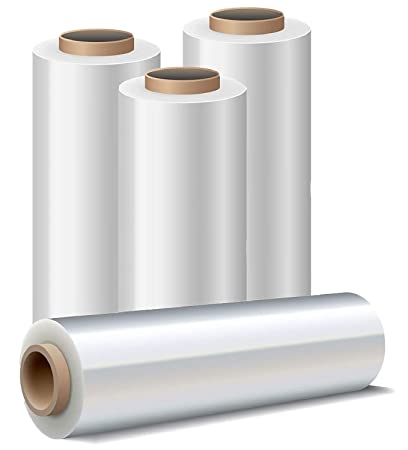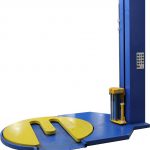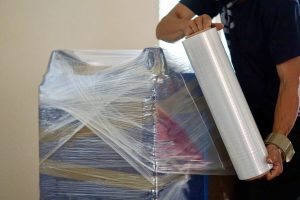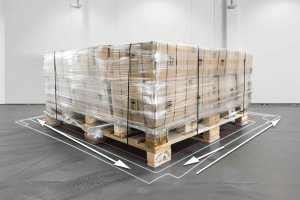
So what exactly is 80 gauge stretch wrap? If you are familiar with stretch wrap, the term 80 gauge stretch wrap should be something you are familiar with. But if you are not, feel free to read on to find out everything about 80 gauge stretch wrap.
The term 80 gauge stretch film refers to the thickness of the wrap. It’s the most common gauge, known for being very versatile and for handling a variety of applications.
It’s great for loads up to 2200-2400 pounds. When you use 80 gauge stretch film in a pallet wrapping machine, wrapping is more efficient and waste can be reduced. In fact, it has the same strength as 12”-20” hand stretch wrap.
But what exactly is a gauge?
A gauge is a measurement to measure thin plastics. There are other measures when referring to stretch wrap with the most common ones being gauge, micron and mil. A 20 micron stretch wrap has the same thickness of an 80 gauge stretch film.
But keep in mind that even though two stretch films have the same thickness, it does not mean they are of the same quality.
What are the main differences between 80 stretch wrap?
As mentioned, two stretch films with the same thickness do not necessarily have the same film quality.
A true 80 gauge stretch wrap can be stretched up to 200% of its original length. But this can vary depending on the type of extrusion process.
There are two different kinds of extrusion process: Blown and Cast. Each extrusion process will produce different film characteristics.
Let’s take a look at everything in further detail.
Blown versus Cast 80 Gauge Stretch film
As mentioned, a standard 80 gauge stretch film will have different characteristics depending on the manufacturing process.
So what is the difference between cast extrusion and blown extrusion?
Cast Extrusion Stretch Film
Cast extrusion cools film resins with chilled rollers. This process allows cast stretch film to have better clarity and it requires less force to stretch. Plus it increases tear resistance and it unwinds quietly from pallet wrapping machines. Cast extrusion stretch film offers a superior cling.
Some advantages of cast stretch films are that it is less expensive and wrapped products can be seen with more clarity. However, cast stretch film has less memory and tear resistance than blown stretch wrap.
Blow Extrusion Stretch Film
Blow extrusion cools film resin with air. This process allows stretch film to be tougher and more resilient than cast film.
Blown stretch wrap offers high load and stretch capacity and it has a higher tear resistance.
On the other hand, it is also more expensive, noisy when unwound from rolls, and has poor clarity.
The most common differences between 80 gauge cast stretch film and 80 gauge blown stretch film are:
80 Gauge Cast Stretch film
- Clearer
- Less noise unwinding
- Less puncture resistance
80 Gauge Blown Stretch Film
- Loud unwind
- Hazy
- Higher puncture resistance
- Higher cost
So if you have been using a blown gauge stretch wrap, and happen to try a cast 80 gauge stretch film, you will notice the difference between the two films.
In fact, one can determine if a stretch film is a true 80 gauge stretch wrap by using a micrometer to check the film thickness. A micrometer is a measuring tool and it is used to measure the thickness of objects. You can also do a film thickness equation to determine the thickness of stretch wrap.
Thickness Equation
In order to use the thick equation, find out the weight of an unused roll of stretch wrap. Just use the formula below to determine the thickness of stretch films:
Roll Weight ÷ Roll Width ÷ Roll Length ÷ 12 x 30,000 = Film Thickness
In short, 80 gauge stretch film offers more efficient wrapping and minimizes waste. It also has superior stretchability as compared to normal stretch films.
To find out more about 80 gauge stretch film and other types of stretch films, talk to our friendly salespersons.





